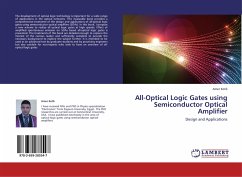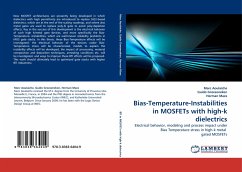
High-k Dielectrics and Metal Gates for Memory Applications
Investigation of High-k Dielectrics and Metal Gate Electrodes for Floating Gate Non-Volatile Memory Applications
Versandkostenfrei!
Versandfertig in 6-10 Tagen
52,99 €
inkl. MwSt.

PAYBACK Punkte
26 °P sammeln!
Due to the increasing demand of non-volatile flash memories in the portable electronics, the device structures need to be scaled down drastically. However, the scalability of traditional floating gate structures beyond 20 nm NAND flash technology node is uncertain. In this regard, the use of metal gates and high-k dielectrics as the gate and interpoly dielectrics respectively, seem to be promising substitutes in order to continue the flash scaling beyond 20nm. Furthermore, research of novel memory structures to overcome the scaling challenges need to be explored. Through this work, the use of ...
Due to the increasing demand of non-volatile flash memories in the portable electronics, the device structures need to be scaled down drastically. However, the scalability of traditional floating gate structures beyond 20 nm NAND flash technology node is uncertain. In this regard, the use of metal gates and high-k dielectrics as the gate and interpoly dielectrics respectively, seem to be promising substitutes in order to continue the flash scaling beyond 20nm. Furthermore, research of novel memory structures to overcome the scaling challenges need to be explored. Through this work, the use of high-k dielectrics as IPDs in a memory structure has been studied. For this purpose, IPD process optimization and barrier engineering were explored to determine and improve the memory performance. Specifically, the concept of high-k / low-k barrier engineering was studied in corroboration with simulations. In addition, a novel memory structure comprising a continuous metal floating gate was investigated in combination with high-k blocking oxides. Both electrical and analytical characterization studies were undertaken to gain insight into the behavior of the memory layers in the structure.












